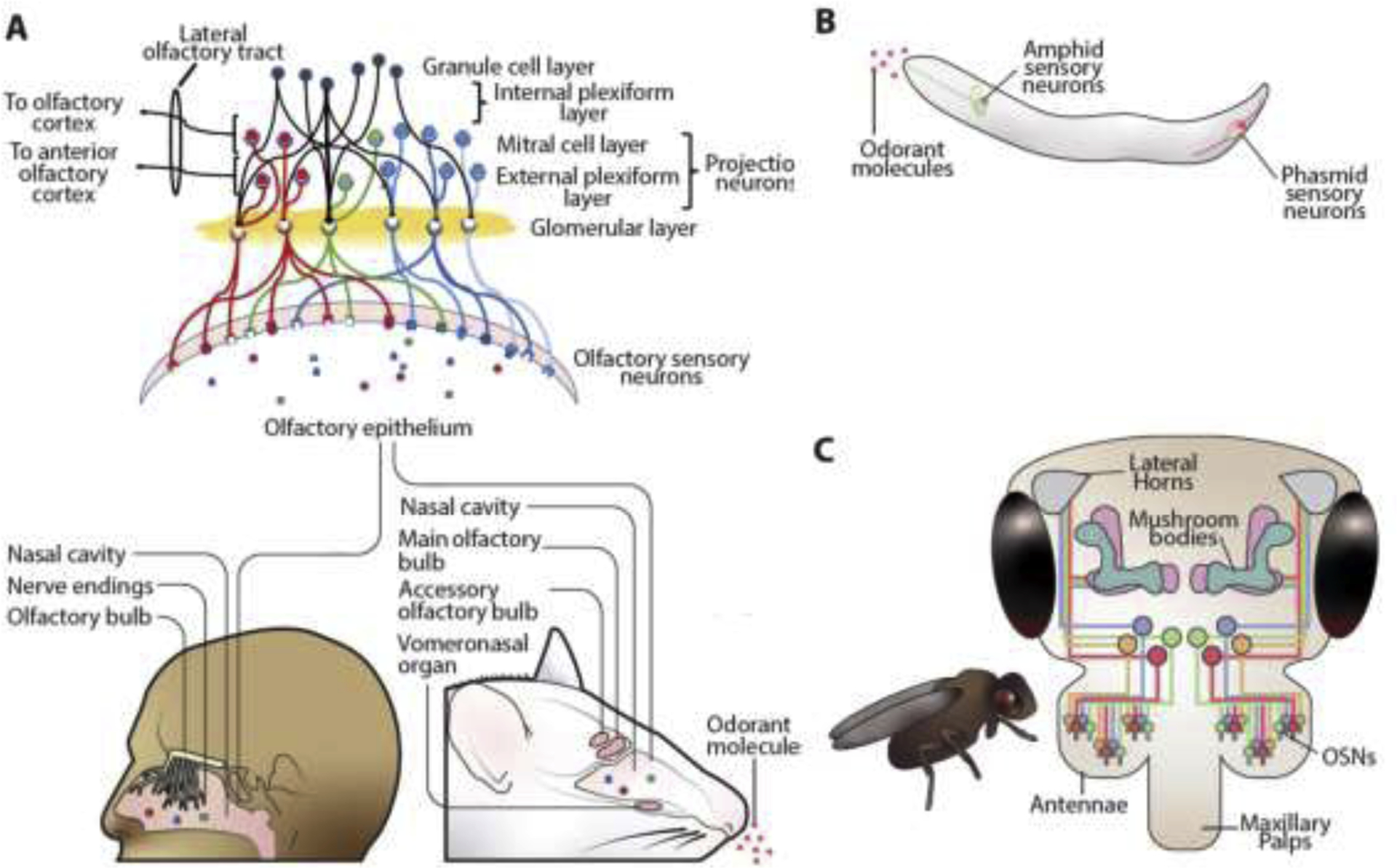Fig.2.

The olfactory circuits in different organisms. (A) Olfactory system in humans and mice. Olfactory sensory neurons (OSNs) detect odorant molecules from olfactory epithelium, and project their signals to neurons in the glomerular layer, where axons then synapse with neurons in the mitral cell and external plexiform layers. Mitral cell axons transmit to the entire olfactory cortex, while external plexiform layers axons are confined to the anterior olfactory cortex. Mice have an accessory olfactory bulb and vomeronasal system. (B) The olfactory system in C. elegans. C. elegans possess four chemosensory organs or sensilla: the amphid, the phasmid, and the inner and outer labia (not shown). C. elegans chemosensory neurons are sensitive to multiple odorants due to expression of multiple chemoreceptors in each cell. Receptors of the same cell may propagate their signal intracellularly via different pathways, permitting a wide range of responses to odors that are detected by the same neuron. (C) Olfactory system in fruit flies. They have OSNs like those in humans and mice but in fewer numbers. OSNs expressing the same olfactory receptors send their signals to specific glomeruli of the antennal lobe where it synapses with the dendrites of specific second order projection neurons (not shown). The projection neurons in turn connect to the mushroom bodies, which are involved in olfactory learning and memory, and the lateral horns, which primarily route information instructing innate behaviours.
